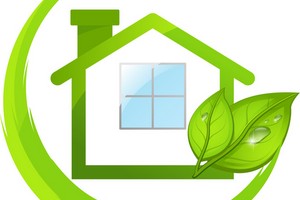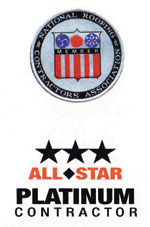Cool Roofing Beats Summer Heat
Cool Roofing Solutions for the Summertime Heat
White Roofs Keep Buildings Cooler
 Cool roofing beats summer heat. Eco-friendly roofing materials are not a fad. White, or reflective, roofs have been in use for the past 20 years. Commonly referred to as “cool roofing”, they have been designed to reflect more sunlight and absorb less heat than a standard roof. Cool roofs can be made of a highly reflective type of paint, a sheet covering, or reflective tiles or shingles. It has become a LEED (Leadership in Energy and Environmental Design) standard of the U.S. Green Building Council, and has been mandated by government officials in Chicago, New York, Seattle and Philadelphia. Cool roofing also includes garden roofs, which absorb heat through soil and keep the surface cool with rainwater and vegetation. Metal roofing is also good for the environment and better at regulating temperature than tar or asphalt roofs.
Cool roofing beats summer heat. Eco-friendly roofing materials are not a fad. White, or reflective, roofs have been in use for the past 20 years. Commonly referred to as “cool roofing”, they have been designed to reflect more sunlight and absorb less heat than a standard roof. Cool roofs can be made of a highly reflective type of paint, a sheet covering, or reflective tiles or shingles. It has become a LEED (Leadership in Energy and Environmental Design) standard of the U.S. Green Building Council, and has been mandated by government officials in Chicago, New York, Seattle and Philadelphia. Cool roofing also includes garden roofs, which absorb heat through soil and keep the surface cool with rainwater and vegetation. Metal roofing is also good for the environment and better at regulating temperature than tar or asphalt roofs.
It’s becoming well-known that along with dark pavement and disappearing vegetation, dark roofing is a major contributor to the “urban heat island” effect, which is the tendency of urban areas to reach temperatures about 5 degrees higher than outlying rural areas. In addition to discomfort and even danger for people who live and work in overheated buildings, the owners of hot buildings also face escalating energy costs, potential energy shortages, and accelerated aging of building structures.
In response to this problem, a number of programs have been initiated throughout the country. Installing a white reflective roof membrane can help reduce those energy uses and costs.
In addition, many cities and all 50 states have mandated cool roofing at some level, and offer tax rebates or other incentives to promote the use of cool roofing to building owners.
As temperatures and energy costs continue to rise, it may be worthwhile to consider a cool roof.





























